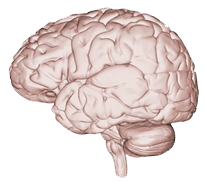tDCS
Transcranial Direct Current Stimulation, or tDCS for short, is a form of neurostimulation, which delivers a weak, gentle electrical current to the brain via scalp electrodes. Nuraleve has developed the painrelief™ program, applying tDCS to reduce chronic pain symptoms and the craveRelief program for cravings reduction. tDCS works via neuroplasticity in the motor cortex region of the brain, an important region involved in the management of pain. tDCS facilitates beneficial changes at the neuronal level, and reverse maladaptive changes caused by chronic pain.

Safety and Effectiveness
Double-blind, randomized trials validate the ability of tDCS to significantly reduce chronic pain symptoms.
Repeated administration of tDCS has a cumulative effect on chronic pain reduction.
Administration of tDCS results in both short- and long-term beneficial effects.
Publications
- O’Connell, N. E., Wand, B. M., Marston, L., Spencer, S., & DeSouza, L. H. (2010). Non-invasive brain stimulation techniques for chronic pain. Cochrane Database Syst Rev, 9.
- Knotkova, H., & Nitsche, M. A. (2013). Neurophysiological Principles of Brain Stimulation in Pain Management. Journal of The Analgesics, 1, 38-50.
- DaSilva, A. F., Mendonca, M. E., Zaghi, S., Lopes, M., DosSantos, M. F., Spierings, E. L., … & Fregni, F. (2012). tDCS‐Induced Analgesia and Electrical Fields in Pain‐Related Neural Networks in Chronic Migraine. Headache: The Journal of Head and Face Pain, 52(8), 1283-1295.
- Valle, A., Roizenblatt, S., Botte, S., Zaghi, S., Riberto, M., Tufik, S., … & Fregni, F. (2009). Efficacy of anodal transcranial direct current stimulation (tDCS) for the treatment of fibromyalgia: results of a randomized, sham-controlled longitudinal clinical trial. Journal of pain management, 2(3), 353.
- Antal, A., Terney, D., Kühnl, S., & Paulus, W. (2010). Anodal transcranial direct current stimulation of the motor cortex ameliorates chronic pain and reduces short intracortical inhibition. Journal of pain and symptom management, 39(5), 890-903.
